How augmented reality can help you learn trigonometry
For many students, trigonometry is a challenging subject to learn as it requires strong spatial-visualisation abilities. Alongside a team based at Jackson State University in the US, Dr Wenya Xu makes the teaching and learning process easier, with a new learning tool for mobile phones developed using augmented reality
TALK LIKE AN EDUCATOR USING AUGMENTED REALITY
Augmented reality (AR): Visualisations of the real world enhanced with computer-generated elements, usually displayed on a smartphone or tablet. This is not the same as virtual reality (VR), where the real-world is completely shut off (think of VR goggles).
Trigonometry: A mathematical subject studying the relationships between side lengths and angles of triangles.
Spatial visualisation: How we visualise two-dimensional and three-dimensional objects in our minds without seeing them directly in front of us. When looking at a 2D map, we are using our spatial-visual abilities to mentally understand it in 3D.
Interface: Defined as a connection between a person and a computer. An app being used by a person on their smartphone, tablet or computer can be called an interface.
Beta testers: People using an app to test it out before it is released publicly. Any errors reported by the beta testers are sent back to the app development team to solve.
Imagine you are in a trigonometry lesson, but instead of looking at the teacher’s whiteboard, you have a mobile device in your hand. You hold the device in front of you to detect a flat surface. You tap the screen and the app you are using generates two objects – one is a Star Wars Republican Guard and the other is a tower! No, you are not distracted from your learning. You are using augmented reality technology called Plane Detection and you are about to combine it with your trigonometry knowledge to calculate the height of the tower.
Trigonometry is a daunting subject for many students, but this does not need to be the case. Scientists think that the ability to do well at this mathematics subject relates to our spatial visualisation abilities – imagining a 3D concept can be difficult when we are looking at a diagram in 2D.
To help students visualise and learn trigonometry, research assistant Wenya Xu and a team at Jackson State University created a new learning approach using augmented reality (AR). After producing an AR app for mobile phones, they tested it out on freshman (in the UK, year 10) students, to see if it helped, and found promising results.
HOW CAN AR HELP US LEARN MATHEMATICS?
All students have their own learning needs, so teachers face challenges when using one learning method for everyone in the maths classroom. Studies have shown that spatial visualisation is important when problem-solving, visualising abstract ideas and learning STEM subjects.
Wenya explains, “Spatial visualisation is a crucial ability to understand and solve STEM-related problems. Some students may struggle to understand 3D concepts represented in a traditional classroom setting where concepts are presented in a 2D manner. STEM teaching and learning could benefit from a new approach which aims at enhancing students’ visual-spatial ability.”
Imagine you are back in that maths lesson with the AR app but, this time, you are looking at a unit circle. You are using a virtual red stick to connect the circle centre and the circle rim. You can rotate the stick clockwise or anticlockwise to different degrees. The device records the data as you move the stick and you can see the maths ‘in front’ of you. This can help both your teacher to teach and you to learn because, as Wenya explains, “AR offers an efficient way for teachers to use hands-on approaches through the interaction and manipulation of trigonometry models.”
HOW DID THE RESEARCH TEAM CREATE AND TEST THE AR LEARNING TOOL?
Wenya’s team designed their AR app to be used on an Apple iOs device, since students find it easy to use. It goes without saying that students are accustomed to using mobile devices – how they would get on with the AR learning tool was the all-important question.
To get accurate results, the researchers had to compare a class using the AR interface to one not using it at all. This is similar to what medical studies do in clinical trials where there is an ‘experimental’ and ‘control’ group. The first has the subject being tested on them (such as a new drug) and the second has no new subject (such as a placebo, causing no new effects).
Wenya’s research team applied this experimental approach to the maths classroom, where a teacher took two class sessions – one was the experimental and the other was the control group. For the first group, the AR interface was used by the students to learn, but in the control group, the teacher used the traditional whiteboard method. To find out how well the students performed, both classes took four exams during the semester (the school term). The experimental group also filled out a survey about their attitudes towards trigonometry after using AR, reporting how useful and enjoyable they found it.
THE BIG QUESTION: DID AR HELP THE STUDENTS LEARN TRIGONOMETRY?
The exam results showed that the class who used AR (the experimental group) scored higher grades than the control group who did not use the interface. When we look at how the exam results varied throughout the semester, we can see that the experimental group scored notably higher on the first exam compared to the control group. After that, the difference in the exam results between the two groups was less significant.
The research team thinks this could be because the AR style was new and appealing to students at the start of the project – making them more interested and engaged in trigonometry, scoring higher as a result.
Wenya concluded, “This research has provided evidence of the potential learning benefits of AR technology in trigonometry teaching and learning.” She adds that the study, “discovered the positive impacts of an AR trigonometry interface on students’ achievements at the early stage of learning, which indicated that AR has a good potential to improve students’ learning outcomes in trigonometry.”
Overall, results showed that AR helped the students achieve higher grades and most students found it a better way to learn trigonometry. This shows the potential benefits of applying AR technology in education, to not only make the experience more enjoyable, but to facilitate higher grades.
You don’t need to love mathematics to be involved in AR for education, as it can be used to support many different subjects. If you are looking for a career in education, introducing interactive tools such as AR could help you open new doors of learning for students. Wenya has already achieved this at the early stage of her research career.
 WENYA XU
WENYA XU
Research Assistant
Jackson State University, USA
FIELD OF RESEARCH: Education
RESEARCH PROJECT: Creating an augmented reality interface to raise student attainment in trigonometry.
FUNDER: National Science Foundation
Wenya was the first author of the scientific report for this project. She worked with the following people, all based at Jackson State University:
Farshad Amini
Lin Li
Chao Jiang
William Brown
Jianjun Yin
Reference
https://doi.org/10.33424/FUTURUM84
TALK LIKE AN EDUCATOR USING AUGMENTED REALITY
Augmented reality (AR): Visualisations of the real world enhanced with computer-generated elements, usually displayed on a smartphone or tablet. This is not the same as virtual reality (VR), where the real-world is completely shut off (think of VR goggles).
Trigonometry: A mathematical subject studying the relationships between side lengths and angles of triangles.
Spatial visualisation: How we visualise two-dimensional and three-dimensional objects in our minds without seeing them directly in front of us. When looking at a 2D map, we are using our spatial-visual abilities to mentally understand it in 3D.
Interface: Defined as a connection between a person and a computer. An app being used by a person on their smartphone, tablet or computer can be called an interface.
Beta testers: People using an app to test it out before it is released publicly. Any errors reported by the beta testers are sent back to the app development team to solve.
Imagine you are in a trigonometry lesson, but instead of looking at the teacher’s whiteboard, you have a mobile device in your hand. You hold the device in front of you to detect a flat surface. You tap the screen and the app you are using generates two objects – one is a Star Wars’ Republican Guard and the other is a tower! No, you are not distracted from your learning. You are using augmented reality technology called Plane Detection and you are about to combine it with your trigonometry knowledge to calculate the height of the tower.
Trigonometry is a daunting subject for many students, but this does not need to be the case. Scientists think that the ability to do well at this mathematics subject relates to our spatial visualisation abilities – imagining a 3D concept can be difficult when we are looking at a diagram in 2D.
To help students visualise and learn trigonometry, research assistant Wenya Xu and a team at Jackson State University created a new learning approach using augmented reality (AR). After producing an AR app for mobile phones, they tested it out on freshman (in the UK, year 10) students, to see if it helped, and found promising results.
HOW CAN AR HELP US LEARN MATHEMATICS?
All students have their own learning needs, so teachers face challenges when using one learning method for everyone in the maths classroom. Studies have shown that spatial visualisation is important when problem-solving, visualising abstract ideas and learning STEM subjects.
Wenya explains, “Spatial visualisation is a crucial ability to understand and solve STEM-related problems. Some students may struggle to understand 3D concepts represented in a traditional classroom setting where concepts are presented in a 2D manner. STEM teaching and learning could benefit from a new approach which aims at enhancing students’ visual-spatial ability.”
Imagine you are back in that maths lesson with the AR app but, this time, you are looking at a unit circle. You are using a virtual red stick to connect the circle centre and the circle rim. You can rotate the stick clockwise or anticlockwise to different degrees. The device records the data as you move the stick and you can see the maths ‘in front’ of you. This can help both your teacher to teach and you to learn because, as Wenya explains, “AR offers an efficient way for teachers to use hands-on approaches through the interaction and manipulation of trigonometry models.”
HOW DID THE RESEARCH TEAM CREATE AND TEST THE AR LEARNING TOOL?
Wenya’s team designed their AR app to be used on an Apple iOs device, since students find it easy to use. It goes without saying that students are accustomed to using mobile devices – how they would get on with the AR learning tool was the all-important question.
To get accurate results, the researchers had to compare a class using the AR interface to one not using it at all. This is similar to what medical studies do in clinical trials where there is an ‘experimental’ and ‘control’ group. The first has the subject being tested on them (such as a new drug) and the second has no new subject (such as a placebo, causing no new effects).
Wenya’s research team applied this experimental approach to the maths classroom, where a teacher took two class sessions – one was the experimental and the other was the control group. For the first group, the AR interface was used by the students to learn, but in the control group, the teacher used the traditional whiteboard method. To find out how well the students performed, both classes took four exams during the semester (the school term). The experimental group also filled out a survey about their attitudes towards trigonometry after using AR, reporting how useful and enjoyable they found it.
THE BIG QUESTION: DID AR HELP THE STUDENTS LEARN TRIGONOMETRY?
The exam results showed that the class who used AR (the experimental group) scored higher grades than the control group who did not use the interface. When we look at how the exam results varied throughout the semester, we can see that the experimental group scored notably higher on the first exam compared to the control group. After that, the difference in the exam results between the two groups was less significant.
The research team thinks this could be because the AR style was new and appealing to students at the start of the project – making them more interested and engaged in trigonometry, scoring higher as a result.
Wenya concluded, “This research has provided evidence of the potential learning benefits of AR technology in trigonometry teaching and learning.” She adds that the study, “discovered the positive impacts of an AR trigonometry interface on students’ achievements at the early stage of learning, which indicated that AR has a good potential to improve students’ learning outcomes in trigonometry.”
Overall, results showed that AR helped the students achieve higher grades and most students found it a better way to learn trigonometry. This shows the potential benefits of applying AR technology in education, to not only make the experience more enjoyable, but to facilitate higher grades.
You don’t need to love mathematics to be involved in AR for education, as it can be used to support many different subjects. If you are looking for a career in education, introducing interactive tools such as AR could help you open new doors of learning for students. Wenya has already achieved this at the early stage of her research career.
 WENYA XU
WENYA XU
Research Assistant
Jackson State University, USA
FIELD OF RESEARCH: Education
RESEARCH PROJECT: Creating an augmented reality interface to raise student attainment in trigonometry.
FUNDER: National Science Foundation
Wenya was the first author of the scientific report for this project. She worked with the following people, all based at Jackson State University:
Farshad Amini
Lin Li
Chao Jiang
William Brown
Jianjun Yin
ABOUT AUGMENTED REALITY FOR EDUCATION
As we have seen, AR can make learning trigonometry more interactive and enjoyable. Yet, it is a tool that can support students in subjects beyond mathematics.
You don’t even need to be in the classroom, as AR can also help you learn new skills on your smartphone. There are AR astronomy smartphone apps where you can learn where constellations are in the night sky. The interface adds text and images to your view of the sky above, making it easier to remember where the constellations are. Or you can broaden your navigation skills using Google Maps, which now adds arrows to your view of the real world to direct you.
HOW USEFUL IS AR FOR LEARNING DIFFERENT DISCIPLINES?
When used the right way, all age groups can use AR to learn. Wenya explains, “AR could benefit all age group learners, including early childhood students, if used in an appropriate and effective way.”
This approach can be applied to more than just STEM, but arts subjects, encompassing history, English, architecture and design.
AR can help us visualise objects we cannot normally see at the tiny (micro) or huge (macro) level, like seeing how atoms move, or how continents collide across hundreds of kilometres. Having help to comprehend new ideas makes them more memorable and interesting.
AR can help teachers illustrate their lessons across a broad range of subjects, making their lessons more interactive. “The integration of AR into classrooms allows teachers to use hands-on approaches through interaction and manipulation of models,” Wenya says. Looking to the future, AR could become a vital part of distance learning, especially as remote learning has become increasingly common during the coronavirus pandemic. Teachers are already using it during live video lessons to keep their students engaged.
WHAT IS IT LIKE TO DEVELOP AN AR APP FOR EDUCATION?
Developing an AR interface requires team-effort and skills in computing and design. Designers plan how the app should look and feel, while computer programmers build it to be used on our phones, tablets or computers. Once a working model is made, the team can test it out by using beta testers, who send any problems back to the team to solve. To save time, there are also some software packages that allow you to build AR apps, like Unity and Buforia. This way, computer programmers may not be needed, but you will need to learn how to use these packages with the help of online guides and video tutorials.
It can be a rewarding experience for educators using AR to help students achieve higher grades. Wenya was pleased to see a rise in student attainment in trigonometry after introducing AR.
There is clearly potential for AR to help students learn, but there can be some challenges, as each AR system has to be designed for different skills, levels and age groups. Testing these systems also takes time, usually with a low number of participants at first. Ideally, it is best to have as many participants as possible, so that test results can be supported with more data.
• Obtain a bachelor’s degree relevant to education in STEM or the arts.
• Jackson State University offers the Unite Pre-Engineering Summer Program for high school students from historically underrepresented and underserved groups in STEM.
• According to Indeed, a research assistant averages a salary of $36,673 per year, but this varies depending on the subject of study.
• If you prefer to teach secondary/high school students, the average salary of a teacher is $49,548 per year, according to PayScale.
• For focusing on the development of AR apps, an AR designer could gain an annual salary of $75,720, according to Study.com.
PATHWAY FROM SCHOOL TO EDUCATION
You will require a bachelor’s degree to work in education or to become a research assistant, but there is a broad range of subjects you could study – choose one that captures your interest the most. Wenya recommends mathematics, science, foreign languages, bilingual education, special education, or cultural studies and diversity.
If you would like to focus on developing augmented reality tools, you can apply to study augmented reality at university level. UW Reality Lab at University of Washington offers undergraduate and postgraduate courses in AR. In the UK, BSc Virtual and Augmented Reality courses are available at Bournemouth University, University of Bradford, University of Portsmouth, and Cardiff Metropolitan University. A new course, BA Augmented and Virtual Realities is offered by Staffordshire University.
WHO OR WHAT HAS INSPIRED YOU IN YOUR CAREER?
My love for school and education has inspired me to develop my career. As a child, I was always very interested in reading and outdoor activities, which has helped me to remain open to learn about the world around me. Now, I am an early career researcher who has had the opportunity to test a new learning approach in the classroom using AR.
I served as a research assistant during my doctoral study at Jackson State University and graduated in 2019. Even though I am still starting out in my academic research career, I feel a sense of accomplishment that I have successfully introduced AR in the maths classroom. It will be exciting to see what innovations I will implement next during my research, and how the world of education will change in the coming years.
WHAT MAKES LEARNING ENGAGING FOR YOU?
The meaningful and informative learning process keeps me engaged. I enjoy reading the latest resources and learning new information.
WHAT ATTRIBUTES MAKE YOU A SUCCESSFUL RESEARCHER?
Personally, I feel I have an analytical, curious mind and a strong commitment to the research process. I will systematically work through problems and be open to learning during research projects.
HOW DO YOU OVERCOME OBSTACLES IN YOUR WORK?
I have two main approaches that have helped me to overcome obstacles:
1) Setting a clear and detailed schedule. This allows me to stay organised.
2) Making any obstacles I face the number one priority. Every day, I commit time and effort to solving a problem until it is gone. This requires patience and follow-through.
WENYA’S TOP TIPS FOR STUDENTS
1 Be open to learning continuously.
2 Have passion for life and feed your interests.
3 Learn from mistakes. If you get bad grades, have courage to keep going and try again.
4 Set a clear and detailed schedule.
WENYA’S TOP TIPS FOR TEACHERS
1 Keep a structured schedule and routine for children.
2 Aim for short, fun sessions and be prepared to be flexible.
3 Get creative and mix up methods for learning.
4 Be sure to interact with colleagues and parents.
Got a question for Wenya?
Write it in the comments box below and the researchers will get back to you. (Remember, researchers are very busy people, so you may have to wait a few days.)

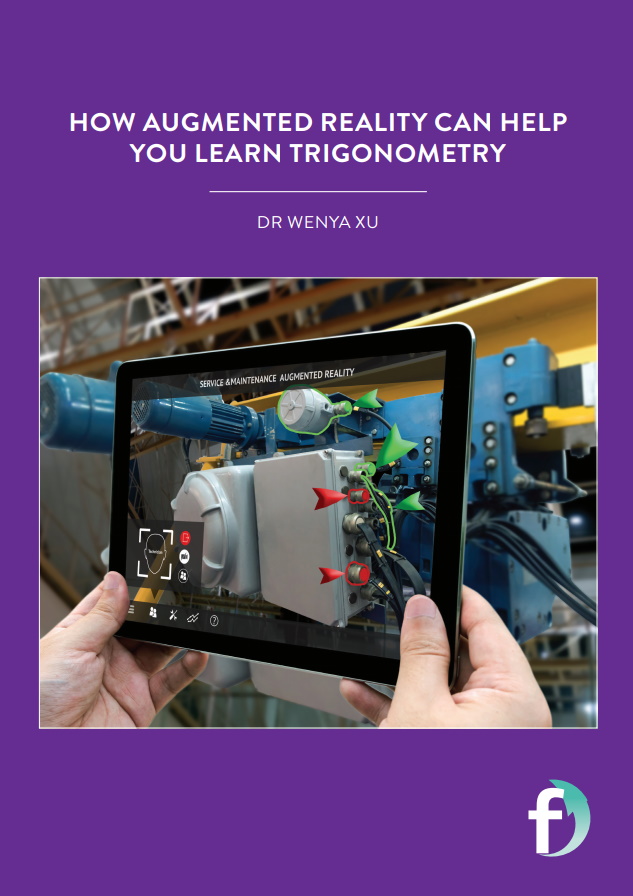


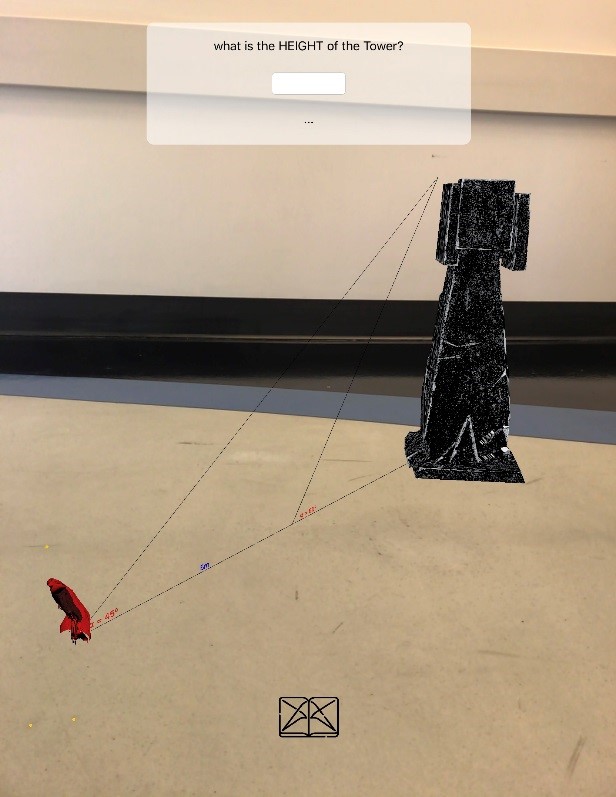

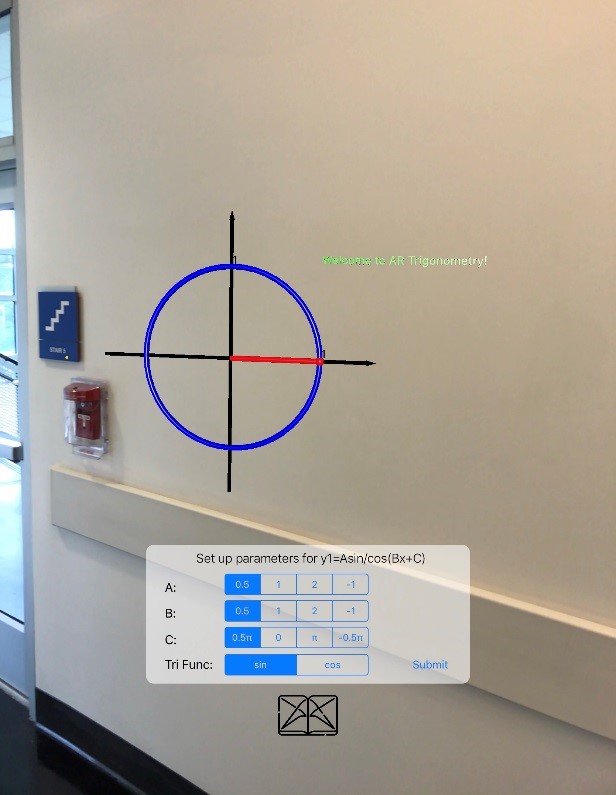
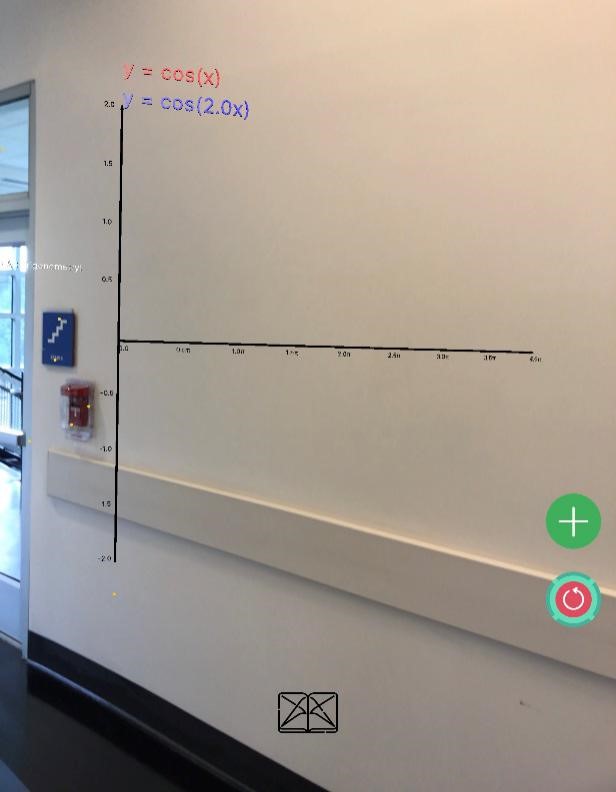
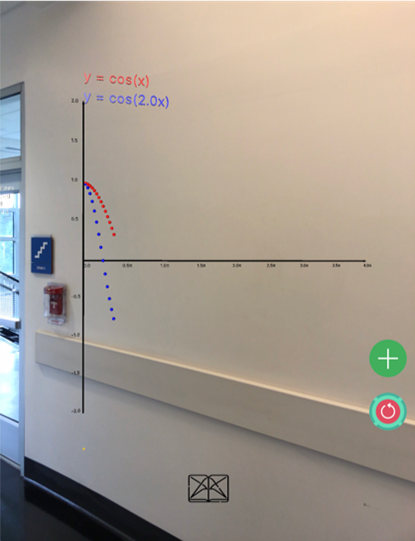



Hai,
I’m a Ph.D. student from Malaysia. My study is about the effectiveness an Augmented reality in trigonometry, I’m interested to know about this study and I already read your explanation. may i know when i can get your articles to support my study. thanks in advance.